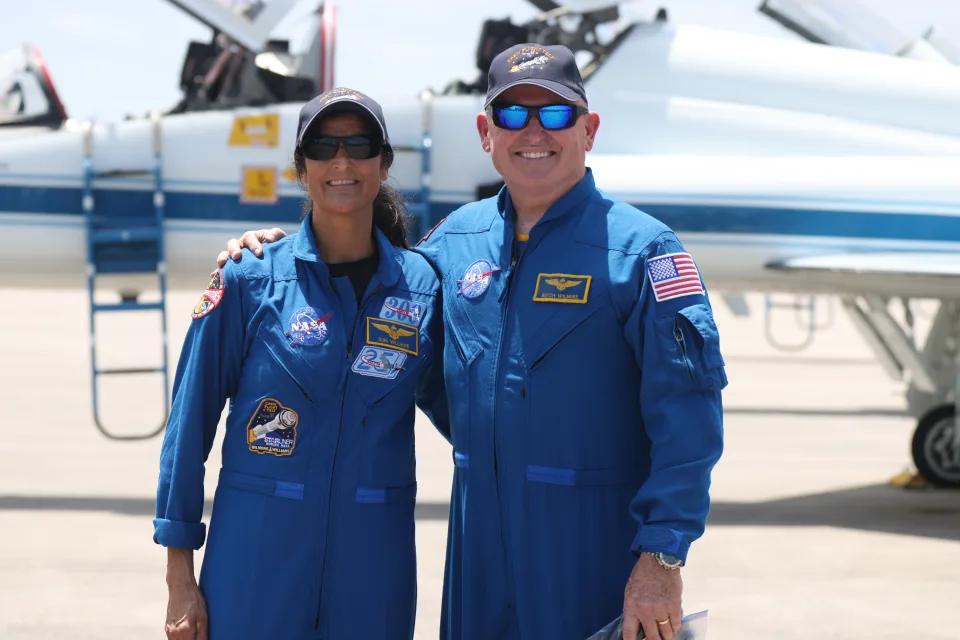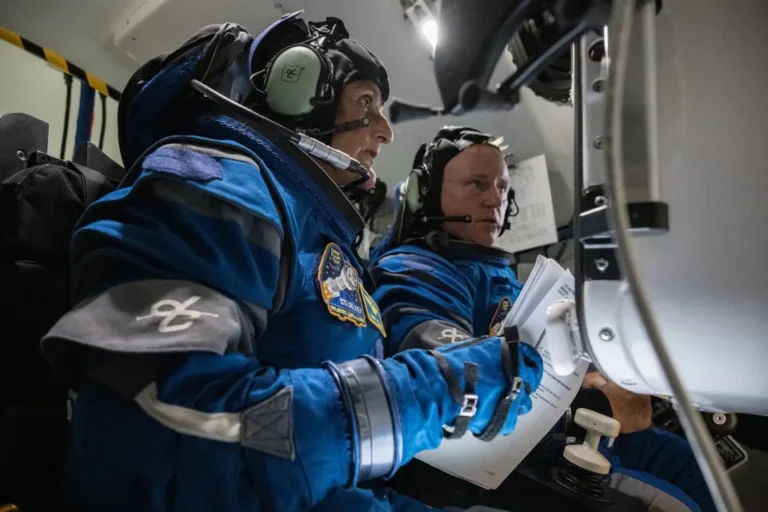It is better to be late than never, right?
The crew capsule known as the Starliner, which has been beset by years of delays and cost overruns amounting to almost $1.5 billion, is about to go on its inaugural trip with humans on board. Together with SpaceX, Boeing was selected ten years ago to construct a spaceship that would be capable of transporting astronauts from the United States to the International Space Station (ISS). This would enable the National Aeronautics and Space Administration to eliminate its reliance on Russia for crewed missions. Both Boeing and SpaceX were awarded a fixed-price contract as part of NASA’s Commercial Crew Program. Boeing was awarded $4.2 billion for its CST-100 (Starliner) and SpaceX was awarded $2.6 billion for its Crew Dragon.
Initially, they set a deadline for 2017, which turned out to be a little bit overly ambitious. As Boeing has struggled to get its Starliner capsule off the ground, SpaceX was able to successfully complete its first crewed trip in the year 2020, and it has since completed over a dozen more. By the time May 6 rolls around, however, it will have successfully completed a flight with a crew.
Starliner is now mated to the United Launch Alliance Atlas V rocket that will carry it to the International Space Station (ISS) at the Launch Complex-41 of the Cape Canaveral Space Force Station. On Monday, May 6, at 10:34 E.T., the launch is scheduled to take place. Butch Wilmore, who will serve as the mission’s commander, and Suni Williams, who will serve as the pilot, will be the two astronauts that have been assigned to the capsule by NASA.
This is not just the first crewed trip that Starliner has ever taken, but it is also only the third flight that it has ever taken. In the spring of 2022, the spacecraft successfully showed its capability to reach, dock, and undock from the International Space Station (ISS) during its second Orbital Flight Test. This test was carried out without any crew members aboard. During its last effort, which took place in 2019, Starliner was unable to reach the International Space Station (ISS) due to a software glitch that caused it to consume an excessive amount of fuel. This was one of several issues that Boeing failed to address because it chose not to conduct end-to-end testing at the respective time.
In the years that have passed since Boeing was awarded the contract with NASA, the business has experienced a multitude of other issues, which has caused it to fall significantly behind SpaceX. In the course of a test in 2018, there was a leak of poisonous fuel. As reported by Ars Technica earlier this year, corrosion caused valves in the propulsion system to become stuck, which made it impossible for Boeing to carry out its plans to launch the spacecraft in 2021. Because of issues with the spacecraft’s parachute deployment system, the team’s plans for a launch to take place during the summer of 2017 were derailed, and they were forced to remove around one mile of flammable tape.
Boeing has also seen a number of difficulties outside of the Starliner program during this time period. The company has been subjected to a heightened level of scrutiny regarding the safety of its aircraft, particularly the 737 Max line, following two tragic accidents that occurred in 2018 and 2019, in addition to other mishaps that were not as severe. Recently, in January, a panel on a Boeing 737 Max 9 blew off in the middle of flight, which resulted in the aircraft having to make an emergency landing.
Starliner’s accreditation as a crew transport vehicle that NASA can really put into its rotation for missions to the International Space Station (ISS) is getting closer and closer with the flight that took place on May 6. With both Crew Dragon and Starliner in service, the space agency will always have a backup alternative in the event that something happens to either of them. This will provide the space agency with the redundancy that it is seeking for. Both the National Aeronautics and Space Administration (NASA) and Boeing have been certain that the capsule has been subjected to a comprehensive evaluation procedure and is now prepared to provide support to astronauts. It was on April 25 when NASA completed its Crew Flight Test Readiness Review of the Starliner satellite.
An associate administrator at NASA named Jim Free stated during a briefing on the completion of the review that “the first crewed flight of a new spacecraft is an absolutely critical milestone.” Suni Williams and Butch Wilmore, two members of our crew, are in danger of losing their lives, and we do not take this matter by any means lightly. Emily Nelson, the chief flight director for NASA, stated that the most recent assessment is “the culmination of a detailed review season that has really thoroughly established that we are really ready to go on this flight.”

Due to the fact that this is a test mission, the crew on board Starliner will have a full task list of systems and equipment checks to do throughout the entirety of the journey. It is anticipated that it will take around twenty-four hours for Starliner to arrive at the International Space Station once it has lifted off. Even though Starliner is capable of operating on its own, the crew will test its manual controls and make certain that it is in good condition for situations that require manual abort as well. Following the docking of the Starliner to the International Space Station, the astronauts will spend approximately one week working alongside the crew that is currently aboard Expedition 71.
After that, they will disembark from the orbiting laboratory and return to Earth, where they will put Starliner through several tests, including reentry and landing. Several possible landing places in the southwestern region of the United States have been identified, one of which is the White Sands Missile Range in the state of New Mexico.
Over the course of several years, Wilmore and Williams have been preparing for the inaugural flight of the Starliner. It was stated by Steve Stich, the manager of NASA’s Commercial Crew Program, that “they know the vehicle inside and out, and they’ve been a part of the test environment that’s developed the Starliner capability.” While everyone who participated in the briefing that took place on Thursday admitted that they would face some unforeseen difficulties, they also agreed that there is a great deal to be learnt from this first crewed flight. “It’s a good reminder for all of us that the team has practiced, run sims, and run models, but there’s nothing like flying in the space environment,” said Free. “It’s a good reminder for all of us.”
In addition, the authorities from NASA and Boeing underlined their confidence that both the vehicle itself and the crews who would be overseeing its journey are adequately prepared for the task at hand. As soon as they arrived at the Kennedy Space Center in Florida, the astronauts expressed their agreement with these thoughts. When Wilmore was asked questions by the press, he responded by saying, “We wouldn’t be here if it weren’t ready.” “The teams are ready, the spacecraft is ready, and we are ready,” the spokesperson said.
There will be backup possibilities for Starliner to launch on May 7, 10, and 11 in the event that it is unable to launch on May 6 under any circumstances. NASA will begin the process of certifying the spacecraft for future trips that will ferry personnel to and from the International Space Station (ISS) once the Crew Flight Test has been completed and the astronauts have returned to their homes. Currently, the year 2025 is being targeted for the Starliner to start its duty.
Free stated, “I don’t want to get too far ahead because we still need to fly a successful mission,” prior to the launch of Starliner. “But when we do, and when we certify Starliner, the United States will have two unique human space transportations that provide critical redundancies for access to the International Space Station.”

